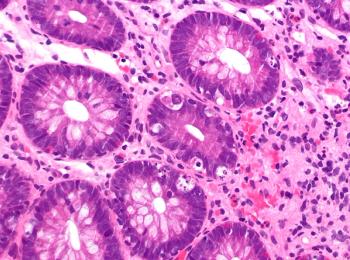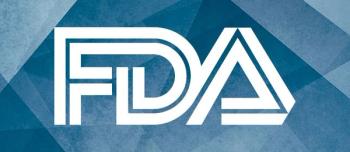
Investigating CAR T-Cell Therapy in Patients With DLBCL, FL, and Other Lymphomas
In this interview, Dr. Frederick Locke discusses the promise of CAR T-cell therapy for lymphomas, and how this gene therapy could offer hope for patients who don't respond to standard treatments.
Cancer Network recently had an opportunity to speak with Frederick Locke, MD, a medical oncologist and translational researcher at Moffitt Cancer in Tampa, Florida, who specializes in stem cell transplantation and cell-based therapies for hematologic malignancies. Dr. Locke participated in the clinical trials that led to US Food and Drug Administration approval of a novel chimeric antigen receptor (CAR) T-cell therapy called axicabtagene ciloleucel. This agent was approved in October 2017 for the management of patients with previously treated large B-cell lymphomas, including diffuse large B-cell lymphoma (DLBCL).
-Interviewed by Anna Azvolinsky
Cancer Network: Can you tell us what CAR T-cell therapy is in general and then describe axicabtagene ciloleucel specifically?
Dr. Locke: Well, “CAR” stands for chimeric antigen receptor, and this is a gene therapy. T lymphocytes, or T cells, are removed from patients’ peripheral blood and reprogrammed with a gene, CAR, that when expressed actually redirects all of the T cells against a single target. T cells that normally would have many different targets are now all reprogrammed in the lab against CD-19, a protein on the surface of B cells (which are also called B lymphocytes). B cells can become cancerous and cause lymphoma, including DLBCL.
Axicabtagene ciloleucel, also called axi-cel, is an autologous gene-and-cell therapy product. We are now using it commercially, as well as in the clinical trial that led to its approval in the United States, to treat patients with aggressive B-cell lymphomas such as DLBCL. To give you a sense of the types of patients we enrolled in the trial, we had a lymphoma patient who received multiple therapies but did not achieve remission, and the lymphoma grew. This is a patient who we knew had, at best, a 1 in 10 chance of having a complete remission following treatment with standard chemotherapy, but who is now getting treated with commercially available axi-cel. In this process, we take patients’ T cells from their peripheral blood, then ship the cells to a central facility where the CAR gene is put into them. The engineered cells get shipped back frozen in about 17 days. We thaw them out onsite, we administer chemotherapy to eliminate the patient’s normal lymphocytes, and then we infuse the thawed out reprogrammed CAR T cells into the patient, just like a blood transfusion. The reprogrammed CAR T cells circulate in the blood, find their CD-19 targets, and destroy those lymphoma cells.
These CAR T cells continue to live in the body, we can detect them a year later after the patient has received them in a single infusion. And we’ve seen very good results: 80% of patients responding and 40% of patients with ongoing responses during a median follow-up period of more than 15 months. So, this single infusion of CAR T-cell therapy can lead to prolonged remission for patients who really had little hope of that from standard therapies.
Cancer Network: You just described how this cell therapy is developed, but could you tell us how it is being used in cancer clinics nationwide? Is special training required to administer it to patients, and is there anything important to note regarding the logistics of its creation and administration?
Dr. Locke: Since this is a cellular therapy, a lot of the logistics relate to the collection, handling, shipping and receiving, and administration of the cells. Currently, centers that are administering CAR T-cell therapy are those that have had experience with the clinical trials of these therapies. Here at Moffitt Cancer Center, we helped to lead the national clinical trial that led to the FDA approval of axi-cel, so we now have quite a bit of experience with administering this therapy. There are regulatory requirements to administer this therapy. So, for the commercial administration of axi-cel, the pharmaceutical company that developed it has to come onsite and inspect our cell therapy facility, as well as our apheresis facility where the cells are collected. The company must also provide training regarding the toxicity that we might see with this therapy. In addition, the FDA requires that we report to them any toxicities that might occur after we administer CAR T-cell therapy.
Moffitt has a stem cell transplant program, and most of the institutions administering CAR T-cell therapy have robust hematopoietic blood stem cell transplant programs because many of the steps involved in CAR T-cell therapy resemble a stem cell transplant, so those pieces are already in place. There are accrediting bodies such as the Foundation for the Accreditation of Cellular Therapy, or FACT, and they provide accreditation for centers and hospitals that have all of the pieces in place to administer CAR T-cell therapy. Clinics nationwide are offering axi-cel and other CAR T-cell therapies, either commercially or as part of clinical trials. In general, these are large tertiary centers that have robust stem cell transplant programs.
Cancer Network: Can you tell us about the efficacy results of the clinical trial that led to FDA approval of axi-cel?
Dr. Locke: The clinical trial that led to axi-cel’s approval was called ZUMA-1. It was a large multicenter clinical study comprising phase I and phase II portions. In the phase I portion we treated 7 patients, and in the phase II portion 101 patients were given CAR T-cell therapy. These patients had either chemorefractory DLBCL or variants of DLBCL like primary mediastinal B-cell lymphoma or transformed follicular lymphoma. All 101 patients received conditioning chemotherapy daily for 3 days and then they received an infusion of 200 million CAR T cells per kilogram. Of patients enrolled, 99% had successful manufacture of CAR T cells and 101 received an infusion. The patients were all high risk and had received many prior therapies. More than 25% were over the age of 65, and 80% of patients had stage III or stage IV disease. The patients enrolled in the trial had not responded to their last line of therapy or had progressed within 12 months of an autologous stem cell transplant. In this patient set, with a 15.4-month median follow-up, 82% of the 108 patients had an objective response and 58% had a complete response-complete disappearance of their lymphoma. Most importantly, 40% of patients remained in ongoing remission, which is remarkable considering historical data on these types of patients, where only about 7% would have a complete response. At 18 months, 52% of patients remain alive.
Cancer Network: What was the safety profile like? Can you share details of the adverse events seen with this therapy in the ZUMA-1 trial?
Dr. Locke: In the updated analysis of all 108 patients, 97% had at least one adverse event of grade 3 or higher. Most of these were hematologic in nature. I mentioned that these patients receive chemotherapy prior to the injection, so they get cytopenia. The two toxicities that we primarily see related to CAR T cells are cytokine release syndrome and CAR T-cell–related encephalopathy or neurologic events. Cytokine release syndrome occurs when many cytokines get released into the serum upon CAR T-cell injection; patients can get high fevers and sometimes hypertension, and occasionally there is a need for mechanical ventilation or administration of vasopressors, but that is rare. In ZUMA-1, 12% of the patients had a grade 3 or higher cytokine release syndrome and that is essentially a patient requiring mechanical ventilation or needing treatment with a high-dose vasopressor. Grade 3 or higher neurologic events were seen in 31% of patients. These are typically word-finding difficulties or aphasia, although tremors can be seen, as well as a number of other neurologic events.
Importantly, both types of events are generally reversible and go away, typically within 30 days of the CAR T-cell administration, and often are resolved within 1 or 2 weeks. By 30 days after therapy, patients are regaining their strength and recovering their blood cell counts; in many cases, they are able to go home to be with their families and even to go back to work. Compared with the toxicity that we see with allogeneic donor hematopoietic stem cell therapy, these toxicities are relatively manageable with close monitoring and close supportive care. Three patients died during the trial, not of lymphoma but due to toxicity associated with the therapy. One patient had a myocardial infarction while suffering from cytokine release syndrome. Again, that is about 3% of the patients in total, which means that this is therapy requires very close monitoring of patients and expert care.
Cancer Network:Since this is a tailored therapy that needs to be created for the individual patient, there must be implementation challenges. Please talk about your experience with prescribing this treatment and then the challenges you’ve seen at your center in terms of making the treatment, meeting infrastructure needs, and delivering the therapy.
Dr. Locke: It is critical that these patients are referred early to receive this treatment, to a center that performs CAR T-cell therapy. Many times we see patients with DLBCL who have had four lines of therapy and are continually progressing through each line, with very poor performance status. Unfortunately, those patients may be unlikely to make it through the 17 days we need to manufacture the CAR T cells, and it is less likely that they will be able to tolerate the severe cytokine release syndrome or get through the other acute toxicities of therapy. Patients who do not respond to salvage chemotherapy prior to a stem cell transplant should be considered for CAR T-cell therapy.
One clinical trial has begun and others will follow that are large phase III, randomized clinical trials comparing salvage chemotherapy plus autologous stem cell transplant versus CAR T-cell therapy, that is, second-line therapy administered earlier in the disease course. The really important questions are whether this therapy can be given safely; early in the disease course; and as second-line treatment, replacing an autologous stem cell transplant. So any DLBCL patient who is not responding to first-line chemotherapy or who has experienced a relapse should be referred to a center with expertise in CAR T-cell therapy.
Newsletter
Stay up to date on recent advances in the multidisciplinary approach to cancer.

















































































